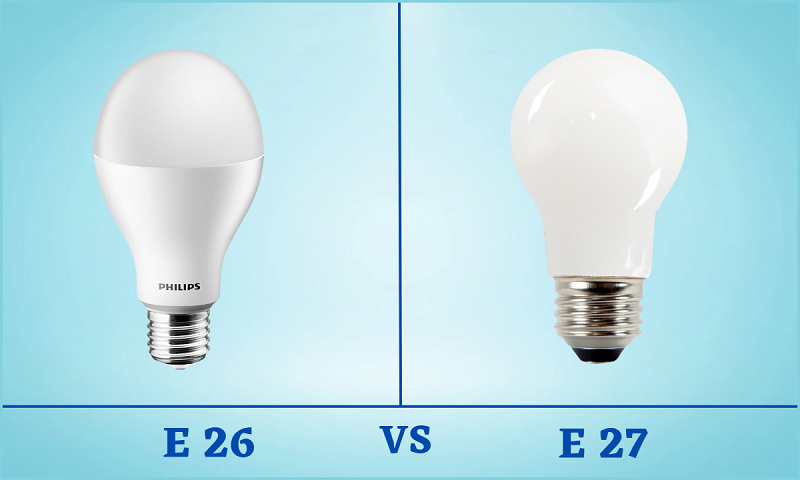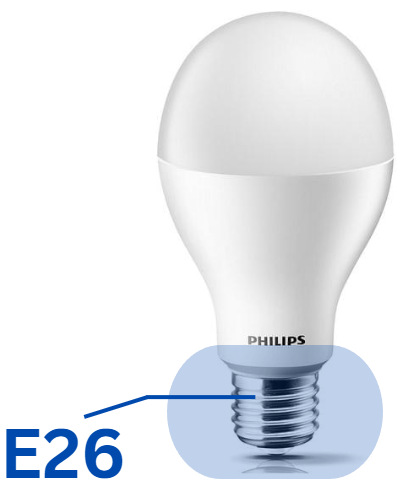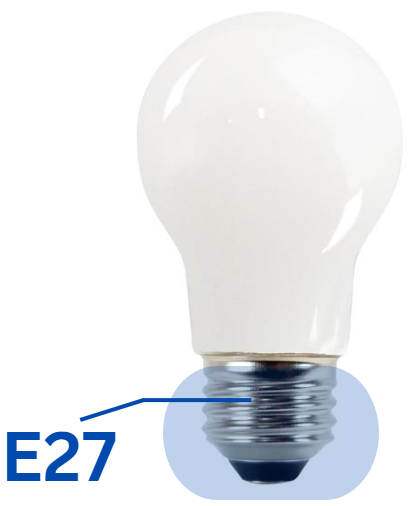What is the Difference between E26 and E27 Socket? (Explained)
Getting the right type of light bulb can be quite confusing since there are a lot of types and models available. You must know the specifications used in light bulbs to buy the right one for your home.
One of the common specifications people get confused about is the type of socket or base used in light bulbs. The socket nomenclature is also similar to the bulb, and it is important to differentiate between them.
In this blog post, we will be discussing the difference between E26 and E27 bulb bases and understanding which kind of bulbs they can fit in.

What is the Difference between E26 and E27 Sockets?
The E26 socket has a 26mm base diameter while the E27 socket has a 27mm base diameter. E27 sockets are usually used in Europe and Asia while the E26 is widely used in the US. Apart from the mechanical differences, the E26 socket is used in a 120V supply while the E27 is used with a 240V supply.
Let us understand the nomenclature used in denoting the socket and know more about the differences between the two bases in detail.
What Does E26 And E27 Mean?
We already mentioned that the socket nomenclature is similar to the bulb nomenclature. In bulbs you can find an Alphabet denoting the type or shape of the bulb and the number adjacent to it denotes the diameter.
Similarly, in socket nomenclature, the alphabet stands for the type of base and the number denotes the width or diameter of the base.
In our case, the letter ‘E’ stands for Edison Screw which is one of the common bulb bases used. The numbers 26 and 27 denote the diameter of the circular base in millimeters.
E26 and E27 bases are also mentioned as medium bases or standard bases since they have a size that is not too small or too large.
E26 vs E27
 |  | |
| E26 | E27 | |
| Type | Medium Edison Screw | Medium Edison Screw |
| Diameter of the base | 26mm | 27mm |
| Length of the base (including the insulator cap) | 26.67mm | 26.67mm |
| Insulator Cap height | 3.25mm | 5mm |
| Suitable Voltage | 120V | 240V |
| Commonly used bulb types | All types of light bulbs including A, B, C, BR, PAR, MR, T, and G. | All types of light bulbs including A, B, C, BR, PAR, MR, T, and G. |
These are the differences between E26 and E27 bases. Let us now understand where they are widely used and whether these bases are interchangeable.
Where E26 and E27 Bases are Widely Used?
E26 base bulbs are used widely in the US since the supply voltage is 120V. The socket is designed to support 120V and it is safe to use it in countries that supply that voltage.
On the other hand, E27 must be used with a 240V supply, and you can find it in European and Asian countries.
Therefore, according to the part of the world you are living in, you should choose the bulb base properly.
Are E26 and E27 Interchangeable?
Mechanically, bulbs with an E26 base can fit into E27 and vice versa. But considering the electrical standards, it is not advised to interchange them.
As we mentioned earlier, E26 bases have a short insulator cap which is suitable for usage in 120V. the E27 bases have a longer insulator cap which makes it suitable for usage in 240V.
However, it can be safe to use a bulb with an E27 base in an E26 socket. Because the E26 socket will only receive 120V of supply and using a bulb base compatible with 240V will not be a safety hazard.
But, when you use a bulb with an E26 base in an E27 socket, it cannot be safe since the E27 base can conduct up to 240V while the E26 is designed to work only with 120V.
Therefore, it is not advised to interchange the bulbs with different bases even though they are mechanically fitting each other.
So, technically you cannot interchange the E26 and E27 light bulbs considering the electrical safety standards.
A19 vs E26 – What is the Difference?
A19 denotes the shape and size of the bulb while the E26 denotes the type and size of the base used in the bulb.
You can find the A19 or A15 bulbs to use an E26 or E27 base. Any bulb can use these bases. Almost all the bulb shapes including the A, B, C, BR, PAR, MR, T, and G use the E26 or E27 base which makes it one of the standard sockets used around the world.
Therefore, the term A19 should not be confused with E26 since it denotes different parts of the bulb.
Conclusion
E26 and E27 bases are one of the widely used light bulb sockets around the world. They both have minor differences between them, but they are significant for their work. You should try to get the right type of bulb with the appropriate base since it will not be electrically compatible.